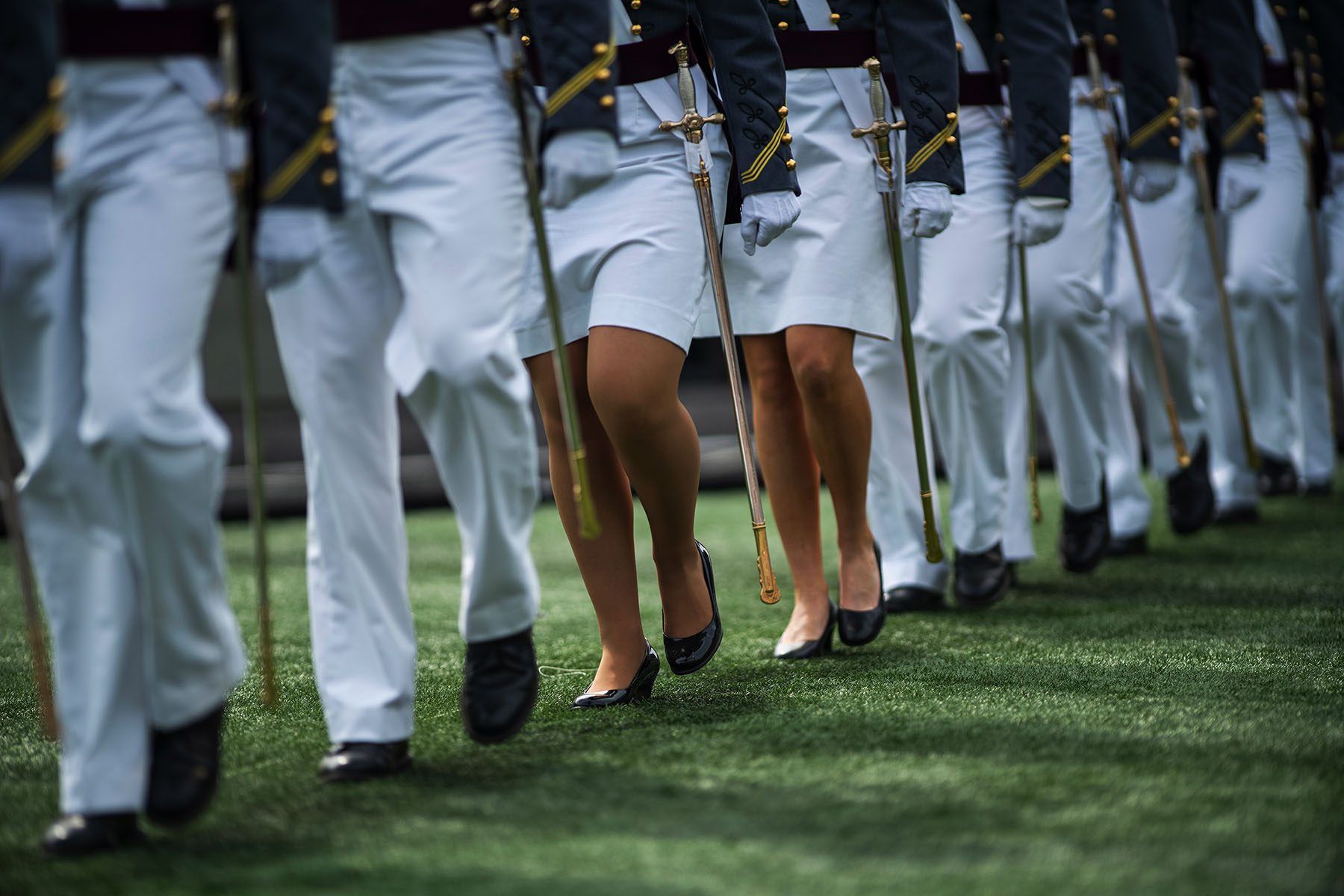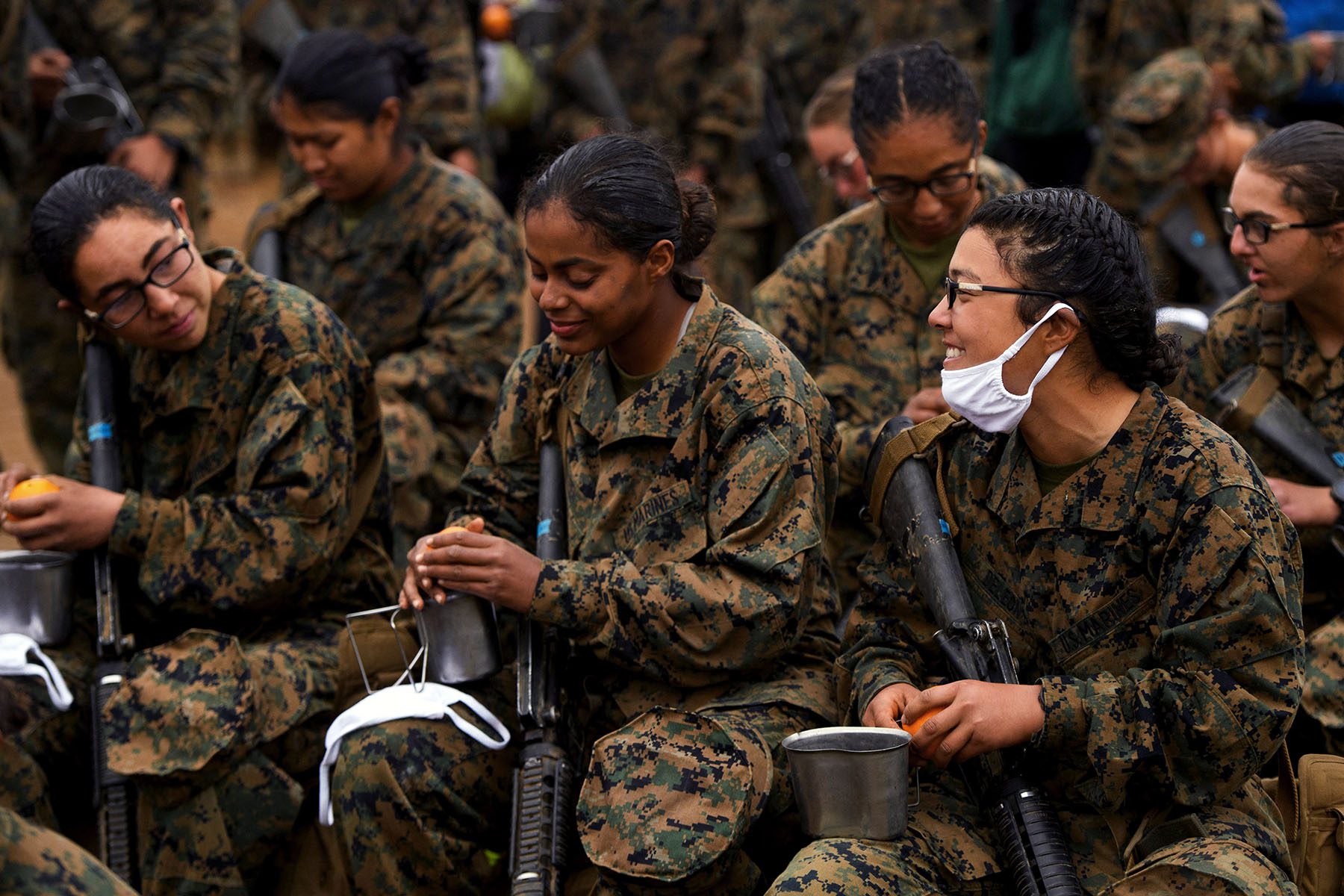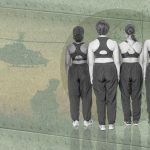A woman who has been in the Army for 20 years has probably paid more than $8,000 out-of-pocket for uniforms. A man with the same amount of service, however, paid around $3,500, according to a recent report from the U.S. Government Accountability Office (GAO). Similar disparities were found in the Navy and the Marine Corps.
In April, several weeks after the GAO report was released, Democratic Reps. Julia Brownley of California and Jackie Speier of California and Rep. Elise Stefanik of New York, the No. 3. House Republican, introduced a bipartisan bill to address gendered cost disparities in the military. Now, Sens. Maggie Hassan of New Hampshire, a Democrat, and Joni Ernst of Iowa, a Republican, are introducing a similar bipartisan bill in the Senate.
In an exclusive to The 19th, Hassan said it was “absurd” that service members are forced to “fork over thousands of dollars” to pay for clothes they wear to serve the country. The military services — Army, Navy, Marine Corps and Air Force — provide annual clothing allowance to enlisted service members to replace uniform items. However, GAO found that some items were excluded and identified inconsistent requirements across services.
“This disparity in uniform costs is particularly stark for women, who are in some cases paying almost twice as much for the same uniform item as their male counterparts,” Hassan said in a statement. “I look forward to working closely with Senator Ernst to push forward this bill and make sure that we help close the gender inequities in our military.”
Ernst, a veteran with more than two decades of military experience, did not respond to requests for comment on the legislation.
In the past decade, each of the military services has made changes to their uniforms. After reviewing these 18 changes, the GAO found that particularly among officers, women were disproportionately required to pay more out-of-pocket costs. For example, nearly half of the mandatory changes made in the Navy affected only women. None of the changes affected only men.
Tina Won Sherman, a director of the GAO, said she expected that recent uniform changes would increase over time costs for officers, who are typically expected to pay out-of-pocket for uniforms. Officers are generally provided a $400 cash allowance when they first report for active duty, but they do not receive any additional allowances.
But Sherman didn’t anticipate the extent to which these costs impacted women.
“It’s always a bit surprising when you realize that there continues to be disparities, in this case between men and women service members, when it comes to something as basic as uniforms,” Sherman said.
Newly enlisted service members are given uniforms that range in value from $1,600 to $2,400, according to the GAO report. Sherman said she was surprised to learn that more women’s uniform items — such as dress pumps, hand bags and swimsuits — are excluded from the list of items that the military would replace for all enlisted service members. In addition, women receive only a small, one-time allowance to purchase undergarments. It’s typically less than $200, Sherman added. Men also receive an initial, one-time provision for underwear, undershirts and athletic socks, but these items are generally cheaper to replace than bras, underwear and hosiery, according to the report.

The disparity shows how in some ways the military’s institutional self-perception has shifted in recent years. Last year, for instance, the U.S. Military Academy at West Point reversed a policy that had required women to pay for uniforms tailored for them if they could not wear the unisex uniforms that were provided to everyone for free.
Kara Dixon Vuic, a professor at Texas Christian University who studies gender and the military, said the senators’ proposal highlights an attempt to “conscientiously not see the male body as the norm any longer.” It marks an official rethinking of the importance of diversity — both between men and women, but also between people with different body types more generally, Vuic said.
If passed, the legislation — coined the Military Forces Assuring that Treatment of Items by Gender are Uniform and Equal across the Services (FATIGUES) Act of 2021 — would require the Department of Defense to develop consistent criteria when it comes to uniform items, review any uniform changes to determine the potential out-of-pocket expenses, and identify the retail costs for men and women across the services.
A spokesperson for Hassan’s office said the senator is optimistic about the legislation’s momentum because of its backing by members of both parties in both chambers of Congress and widespread support from a dozen veteran service and advocacy organizations. The office is pushing to include the bill as an amendment in the National Defense Authorization Act for fiscal 2022, which is currently being negotiated in the Senate.
Lt. Gen. Dana Atkins, a retired Air Force service member and president and chief executive of the Military Officers Association of America, said he appreciated that lawmakers were specifically advocating for women in the military.
“Establishing uniform cost parity between male and female service members is long overdue,” Atkins said in a statement. “Uniform allowances have been based on the male uniform for years, resulting in female service members having to personally subsidize the cost of their uniforms.”
It is not the first time that Hassan, a member of the Senate Committee on Veterans’ Affairs, has worked with Ernst, a member of the Senate Committee on Armed Services, on military legislation. In April, the pair introduced a bill to combat veteran suicide that was passed earlier this month.
Courtney Burns, an assistant professor of political science at Bucknell University, said this legislation, if passed, could bolster recruitment by signaling change to women who have shied away from joining due to the military’s culture. It also shows current and former service members that the government and the military understand the inequities that affect women and other marginalized groups, Burns added.
Jennifer Schenk Sacco, a professor of political science and women’s and gender studies at Quinnipiac University, said women wind up paying more because women and their bodies are not considered ‘standard’ for soldiers. Men and men’s bodies are, she said.
This kind of sexism isn’t new. It is the cost of being female.
Lori Brown, a sociology professor at Meredith College
In addition to the military, police officers and corrections officials wear clothes originally designed for men, according to Lori Brown, a sociology professor at Meredith College. Women tend to be an afterthought.
Sacco also pointed to other workplaces, including fire stations and Congress, which didn’t have women’s restrooms near the chamber floors until 1993 in the Senate and 2011 in the House. Sacco argued that steps to eliminate gender disparities in the military are “part of a continuum of actions being taken to reduce barriers to diversity,” including hairstyle standards that differ across races.
“These ‘wins’ are more than just symbolic,” Sacco said. “They are real, and while they don’t eliminate all gender or racial disparities in the military or other workplaces, they are long overdue steps in that direction.”
Brown asserted that the government should not only pay for the difference in price, but they should include women from the beginning: in the design process.
“This kind of sexism isn’t new,” Brown said. “It is the cost of being female.”
Correction: An earlier version of this article misidentified Lt. Gen. Dana Atkins's gender.







